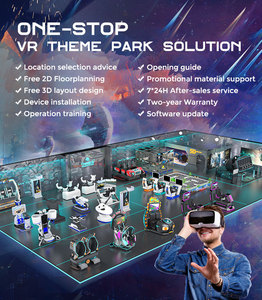Introduction to Augmented Reality Business
Augmented Reality (AR) technology is revolutionizing the way businesses interact with consumers and enhance their operational efficiency. The augmented reality business harnesses the power of digital information and graphics to create immersive experiences in real-time. By overlaying computer-generated elements onto the physical world, businesses can provide enriched information, boost engagement, and create interactive marketing strategies that captivate their audience. Whether it's in retail, education, manufacturing, or corporate training, augmented reality is providing unique solutions that not only improve user experience but also drive profitability.
Types of Augmented Reality Business Solutions
Within the augmented reality business landscape, there are several types of solutions designed to cater to specific needs and industries. Understanding these types can help businesses choose the right AR technology for their goals:
- Marker-Based AR: Utilizes visual markers or QR codes to trigger animations or objects in the augmented space, providing instant interaction. Ideal for marketing materials or product packaging.
- Markerless AR: Does not depend on physical markers and uses GPS, compass, and accelerometer for a more flexible experience. Commonly found in location-based apps like Pokémon Go.
- Projection-Based AR: Projects digital images onto physical surfaces, making it useful for training, presentations, and interactive displays that require real-world tangibility.
- Superimposition-Based AR: Replaces or adds onto a portion of the real-world view with a virtual one, useful in fields such as healthcare for surgical overlays or remote assistance.
Applications of Augmented Reality in Business
Businesses across various sectors have begun to incorporate augmented reality into their operations, leading to innovative applications that enhance efficiency and consumer interaction:
- Retail: Enhanced shopping experiences through virtual try-ons, allowing customers to envision products on themselves without physical samples.
- Training and Education: Interactive training sessions that simulate real-world scenarios, improving retention and understanding among trainees and students.
- Real Estate: Virtual tours of properties which facilitate remote property visits, making the buying process faster and more convenient for potential buyers.
- Manufacturing: Streamlined assembly processes by overlaying technical information right onto the machinery, helping workers assemble complex products accurately.
- Marketing and Advertising: Eye-catching campaigns that allow customers to interact with products through their smartphones, enhancing brand engagement.
Features and Advantages of Augmented Reality Business Solutions
Adopting augmented reality technology in business brings forth a plethora of features that significantly enhance company operations and customer interaction:
- Immersive Experiences: Augmented reality provides unique engagement opportunities by creating experiences that foster deeper connections with products and services.
- Real-Time Information: Users can access up-to-date data as they interact with augmented elements, improving decision-making in critical scenarios.
- Cost-Effective Training: Reduces reliance on physical materials and locations by providing virtual scenarios, ultimately cutting training expenses significantly.
- Increased Sharing Potential: Engaging AR experiences are inherently more shareable, encouraging organic media exposure and improving brand visibility.
- Competitive Edge: Companies embracing augmented reality can differentiate themselves in saturated markets, thereby attracting a more tech-savvy audience.






















































